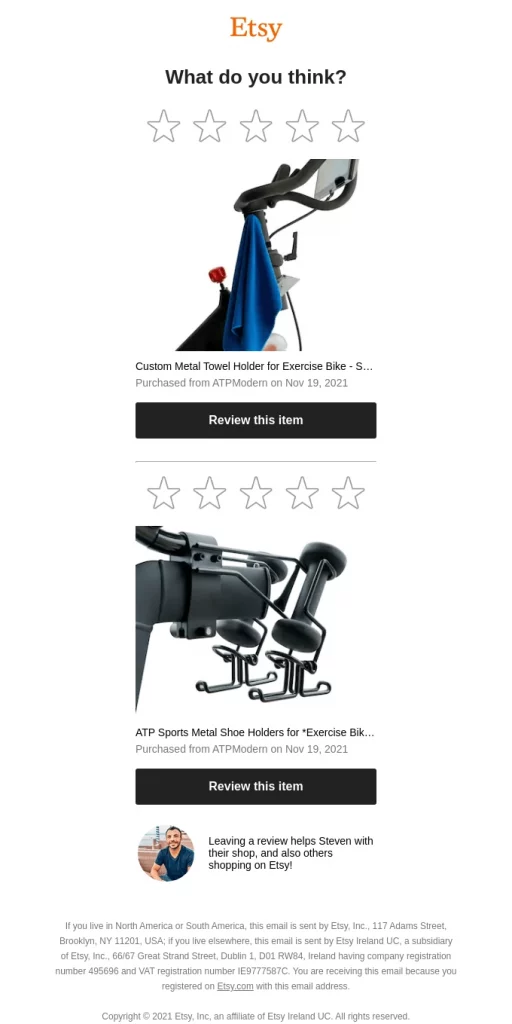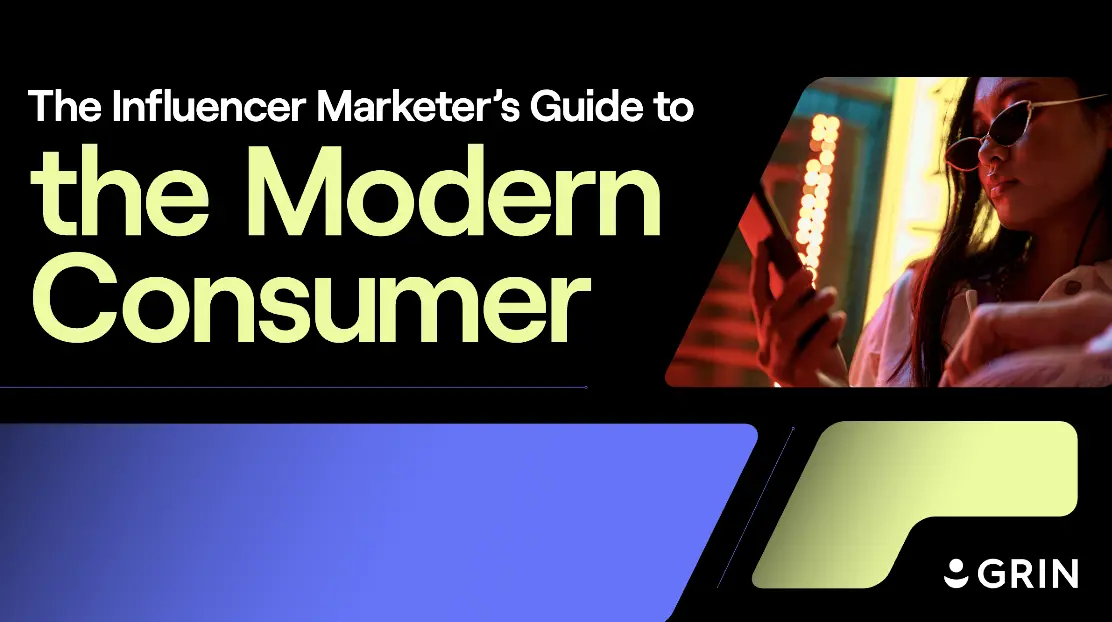Picture this: You’re just about to add a comfy chair to your online shopping cart, but then you realize you’ve made one mistake—you haven’t checked the reviews. So you scroll down and see a ton of 1-star ratings. You’re probably going to look elsewhere for other chairs, right?
But just like how negative reviews can scare people away from a product, glowing reviews can make consumers feel validated in their purchasing decisions.
That’s the power of social proof.
Plus, reviews are extra essential in the DTC and ecommerce spaces since users can’t pick up or try the product before purchasing.
So, the question is how to encourage customers to write reviews at all.
If you’ve ever tried to get reviews from customers, you may know it’s like pulling teeth.
Fortunately, partnering with creators can help you get the reviews you need to sway customers. Let’s dive into the basics.
Can you leverage influencer marketing for reviews?
Partnering with influencers can be a great way to get product reviews. There are a few ways to do this—mainly product gifting campaigns and post-purchase review campaigns. Let’s dive into each so you can get a better feel of which may be right for your brand.
How do you run an influencer review program?
Before running an influencer review program, the first thing to do is ensure you’re offering quality products. While this may sound obvious, it’s essential. Sending out products that have gotten a lot of negative reviews in the past without improving the quality can lead to an even larger amount of negative reviews.
After that, you must decide what kind of reviews you would like to receive. There are two main ways people can leave reviews, and each has its pros and cons.
- On an ecommerce site, whether it’s your own or a marketplace like Amazon or Walmart
- Pros: Many creators will write these in exchange for a free product and will not require payment.
- These can help build confidence when somebody is further down the funnel and ready to make a purchase.
- You can repurpose the reviews for other marketing channels, like ads or emails.
- Cons: Working with well-known influencers won’t provide much benefit as people won’t look at the names in online reviews.
- As a post on a social media platform
- Pros: These posts can help expose your company to new audiences and increase brand awareness.
- If you negotiate for content usage rights, you can repurpose this content in other marketing channels.
- Cons: While some creators will do this in exchange for a free product, many will also require additional payment.
- Pros: Many creators will write these in exchange for a free product and will not require payment.
From there, you can choose one of these types of programs to get started.

Product gifting campaigns
What are product gifting campaigns?
Product gifting campaigns involve sending a free product to a person in exchange for an honest review. These can be great for earning both on-site ratings as well as social media reviews.
If you have a new product without many reviews on your site or a product that isn’t selling too well, boosting the number of on-site reviews can be very beneficial.
How do influencers fit in?
Nano and micro influencers and even regular customers without significant followings can be great people to reach out to in order to get on-site reviews. People reading reviews aren’t looking for name recognition; they just want honest opinions.
Reach out to creators you think would like your products, and ask if they’d be willing to write a review in exchange for a free item. Or, if you have an active online community, ask if anyone would like to try a new product.
Additionally, if you’re selling your products in a third-party marketplace, you may be able to access their programs to bring in new reviews.
For example, Amazon Vine is a program that the online retailer manages. Essentially, they invite people who routinely leave thorough and honest reviews into this program. Then, companies selling through Amazon and looking to earn more ratings can send the “Vine Voices” their products in exchange for unbiased reviews.
Post-purchase review campaigns
What are post-purchase review campaigns?
Post-purchase review campaigns involve reaching out to customers and asking them to write a review on the product they just purchased. This often does not require any product seeding efforts since they already have the item to review.
How do influencers fit in?
Just as influencers can encourage people to purchase products, they can persuade people to leave reviews. In the case of an email, consider featuring a review from a creator front and center. Be sure to include a photo and name with the review so consumers can recognize them. Then, add a CTA at the bottom asking the customer to join the creator and leave a rating of their own.
And you can take this one step further and personalize it even more. If you’re working with affiliates and you can attribute certain sales to specific creators, send the buyer an email with a review from the person who influenced their purchasing decision.
The do’s and don’ts of running a review marketing campaign
1. Do make leaving the review as easy as possible.
It’s human nature to take the path of least resistance, so it’s essential to make leaving a review as easy as possible. After someone makes a purchase or you send a free product to a creator, send them a quick email with a nice note and a gentle request to leave a review. Link the exact page you want the review on so they can navigate to it easily.
And since most people will be writing the review on their phones, be sure that your review capabilities are mobile-friendly.
2. Don’t ask for a five-star review.
Asking for a five-star review can leave a bad taste in peoples’ mouths, and they will lose trust in you as a brand.
Plus, if you’re working with creators to generate reviews on third-party marketplaces, like Amazon, you can be penalized and removed from the marketplace entirely if they find out you’re asking for positive reviews.
Instead, encourage your creators to share their honest opinion in the review. Not only will this protect you from a legal standpoint, but it will make the reviews more authentic and trustworthy.
3. Do send out campaign briefs.
While you shouldn’t ask your creators to leave a positive review, you can add some specifications that you’d like them to include. Some common ones include:
- Minimum length – Most brands will ask for at least three full sentences in each review to avoid thin content that doesn’t help consumers make a purchasing decision.
- Talking points – Share a couple of product features or benefits they can mention if they’re not quite sure what to talk about. Don’t make these mandatory, though, or all of your reviews will end up sounding the same, which can cause people to lose trust in your brand.
- Any added media you’d like – If you think the reviews could benefit from photos or videos, include this in your brief.
- FTC guidelines: The Federal Trade Commission puts certain stipulations on sponsored posts or reviews to help viewers see when a brand is providing payment or free items in exchange for them. It’s essential for your creators to include messaging in the review that they received the item for free, or your brand and creators could face legal trouble. The disclosure must also be “hard to miss,” so tell them to place this at the top of their review. Learn more.
4. Don’t ignore bad reviews.
Unfortunately, bad reviews happen. Not everyone will absolutely love your product, and that’s natural. As the saying goes, “You can’t please everyone.”
Whether a bad rating results from an honest creator in your review program or just someone who used your product, don’t be afraid to reach out. Ask for further feedback on the product, and really listen. If it is a paying customer, see what steps you can take to make it right.
After all, if someone sees your company taking the time to comment on bad reviews and make it right, they will have more confidence and trust in your brand. However, if someone is considering a product and sees a lot of negative reviews with no action from the company, they can become more hesitant to make a purchase.
5. Do reach out to existing customers who are influencers.
While no one knows your product better than you, your customers are a close second. And looking through your order history to find customers with larger social followings can be a great way to get authentic reviews from people who already love your brand.
However, this approach can be difficult to do manually. GRIN’s Influential Customer tool allows brands to connect their ecommerce platform and see which of their existing customers have over 1,000 followers on a social media channel.
From there, brands can reach out and ask for reviews on the items they purchased or even offer some additional free products in exchange for honest ratings.
Examples of clever ways brands ask for reviews
Personalized emails and texts to customers are the main ways brands reach out to ask for reviews.

This email from Graza personalized the message with the buyer’s name and a picture of the exact product they purchased. With only one CTA on the email, the reader won’t be distracted by anything else and will be more likely to click “Leave a Review.”

And while this Etsy email uses some of the same concepts (showcasing the exact product the user purchased), they make the experience more intuitive. By adding blank stars above each product, they’re banking on the idea that the user will think the email is interactive and click a certain star. It will then open a link to the actual review page, and consumers who wouldn’t normally leave a review may feel compelled to do so since they’re already on the site.
And by adding the seller’s name and photo, they humanize the experience and showcase the importance of leaving thoughtful reviews.
Key takeaway: Influencers can help you get product reviews.
Whether you’re looking for help in getting your customers to review your products or trying to build a solid base of ratings for a new product through gifting, creators can help. Just as brands rely on creators to build authenticity and trust on social media and blog posts, they can work with creators to build these same qualities into their online reviews.
Learn more about influencer marketing: Influencer Marketing 101



















